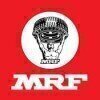Filter interviews by
Mithra Group Interview Questions and Answers
Mithra Group Interview Experiences
1 interview found
I applied via Approached by Company and was interviewed in Oct 2022. There were 3 interview rounds.

This indian economic online test simulation a real online certificate exams.
(7 Questions)
- Q1. What do you know about the Us-china trade war?
- Ans.
The US-China trade war is a ongoing economic conflict between the two countries.
It started in 2018 when the US imposed tariffs on Chinese goods.
China retaliated with tariffs on US goods.
The trade war has had a significant impact on global trade and the economies of both countries.
Negotiations have been ongoing, but a resolution has not yet been reached.
- Q2. Do you think recession is still going on
- Ans.
The recession officially ended in 2009, but its effects are still being felt in certain sectors and regions.
The US economy has been growing since the end of the recession, but the recovery has been uneven across different industries and geographic areas.
Some sectors, such as manufacturing and retail, have struggled to regain their pre-recession levels of employment and output.
Certain regions, such as the Rust Belt and ...
- Q3. Can you comment on this year's budget?
- Q4. Hou do you communication economic data to team members and cunsumers?
- Ans.
I use clear and concise language, visual aids, and real-world examples to communicate economic data to team members and consumers.
I use simple language and avoid jargon to ensure understanding
I incorporate visual aids such as graphs and charts to make the data more accessible
I provide real-world examples to illustrate the relevance and impact of the data
I encourage questions and feedback to ensure comprehension and eng
- Q5. Hat do you mean by capital expenditure?
- Ans.
Capital expenditure refers to the funds spent on acquiring or improving long-term assets.
Capital expenditure is a long-term investment in assets that will benefit the company for many years.
It is not considered as an expense but rather an investment in the company's future.
Examples of capital expenditures include purchasing land, buildings, equipment, and vehicles.
Capital expenditures are usually planned and budgeted f...
- Q6. Father of economist ?
- Ans.
Adam Smith is considered the father of economics.
Adam Smith is known for his book 'The Wealth of Nations' which laid the foundation for modern economics.
He is credited with introducing the concept of division of labor and the invisible hand theory.
Other notable economists include John Maynard Keynes, Milton Friedman, and Paul Samuelson.
- Q7. New father of economics?
- Ans.
The new father of economics is a term used to refer to Paul Samuelson.
Paul Samuelson was an American economist and the first American to win the Nobel Memorial Prize in Economic Sciences.
He is known for his contributions to the development of modern economics, particularly in the areas of mathematical economics and general equilibrium theory.
Samuelson's book 'Economics: An Introductory Analysis' is considered a classic...
Interview Preparation Tips
Top Mithra Group Assistant Professor Interview Questions and Answers
Assistant Professor Interview Questions asked at other Companies
Top trending discussions






Interview questions from similar companies

I applied via Referral and was interviewed in Oct 2018. There were 5 interview rounds.
Interview Questionnaire
4 Questions
- Q1. Mainly focused on technical questions which were interpreted in resume
- Q2. It was with VP-Technology and HR and they asked related to quality and my way for organisation’s growth forecast.
- Q3. Why our organisation and what is your expectation from organisation
- Ans.
I am drawn to your organisation's commitment to innovation and employee development. I expect opportunities for growth and a supportive work culture.
I am impressed by the company's track record of innovation and success in the industry.
I value the emphasis on employee development and growth opportunities within the organisation.
I am looking for a supportive work culture that values teamwork and collaboration.
I expect c...
- Q4. Asked questions related to Team building
Interview Preparation Tips
Experience: On technical basis
General Tips: It was lengthy interview for four times with different people. Be clear on your technical knowledge and give your best.
Skills: Communication, Body Language
Duration: >3 Months

I applied via Referral and was interviewed before May 2020. There was 1 interview round.
Interview Questionnaire
1 Question
- Q1. Self intro and why do you select data analyst posting
Interview Preparation Tips
2. Smiling face and don't show your fear in face
3. Be bold in what your knowing then don't struggle to say answer
4. Positive attitude

Senior Associate Interview Questions & Answers
Samvardhana Motherson Groupposted on 19 Feb 2021
Interview Questionnaire
1 Question
- Q1. How to improve the quality
- Ans.
Improving quality requires a focus on continuous improvement and attention to detail.
Establish clear quality standards and metrics
Regularly review and analyze data to identify areas for improvement
Implement processes and procedures to address identified issues
Provide training and support to employees to ensure they understand and can meet quality standards
Encourage a culture of continuous improvement and innovation

I applied via Naukri.com and was interviewed in Dec 2020. There was 1 interview round.
Interview Questionnaire
1 Question
- Q1. Job related, practical questions
Interview Preparation Tips

Interview Questionnaire
1 Question
- Q1. Work in shifts, Qcc , Line balancing , Kaziens , Achievement in your experience individually and in team .

I applied via Recruitment Consulltant and was interviewed before Jul 2021. There were 2 interview rounds.

(3 Questions)
- Q1. Basic information about current role and responsibilities
- Q2. Why you want to change the current company
- Q3. Family background and qualifications
Interview Preparation Tips

I applied via Campus Placement and was interviewed before Jan 2021. There were 4 interview rounds.
Interview Questionnaire
1 Question
- Q1. Rveerse an array
Interview Preparation Tips

Senior Engineer Interview Questions & Answers
Samvardhana Motherson Groupposted on 19 Jan 2021
I appeared for an interview in Jul 2020.
Interview Questionnaire
1 Question
- Q1. Waht is your achievements
- Ans.
I have achieved several milestones throughout my career as a Senior Engineer.
Successfully led a team of engineers to develop and implement a new software system, resulting in a 20% increase in efficiency.
Received recognition for designing and implementing a cost-effective solution that reduced production downtime by 30%.
Contributed to the development of a groundbreaking technology that revolutionized the industry, lead...
Interview Preparation Tips

Senior Engineer Interview Questions & Answers
Samvardhana Motherson Groupposted on 1 Jun 2020
I applied via Naukri.com and was interviewed in May 2020. There were 4 interview rounds.
Interview Questionnaire
3 Questions
- Q1. What are the die casting and machining defects?
- Ans.
Die casting and machining defects are common in manufacturing processes.
Die casting defects include porosity, shrinkage, cold shuts, and flash.
Machining defects include burrs, chatter marks, and tool marks.
Die casting defects can be caused by improper temperature, pressure, or metal flow.
Machining defects can be caused by dull tools, improper speeds and feeds, or poor fixturing.
Defects can lead to part failure, reduced
- Q2. What is the formula of filling and high speed ratio?
- Ans.
Filling and high speed ratio formula is used to calculate the filling time of a container with a specific volume of liquid at a given flow rate.
Filling and high speed ratio formula is V/Q
V is the volume of the container and Q is the flow rate of the liquid
The formula is used to determine the time it takes to fill a container with a specific volume of liquid at a given flow rate
The higher the flow rate, the faster the c
- Q3. Why do u want to join Motherson?
Interview Preparation Tips
Mithra Group Interview FAQs
Tell us how to improve this page.
Interview Questions for Popular Designations
Interview Questions from Similar Companies
Mithra Group Reviews and Ratings
based on 19 reviews
Rating in categories
|
Service Engineer
17
salaries
| ₹2 L/yr - ₹6.3 L/yr |
|
Assistant Manager
7
salaries
| ₹3.4 L/yr - ₹5 L/yr |
|
Business Head
6
salaries
| ₹30 L/yr - ₹50 L/yr |
|
Sales Manager
5
salaries
| ₹0.2 L/yr - ₹5.2 L/yr |
|
Sales Engineer
5
salaries
| ₹1.8 L/yr - ₹2.9 L/yr |

Bosch

JBM Group

Samvardhana Motherson Group

Subros
- Home >
- Interviews >
- Mithra Group Interview Questions







